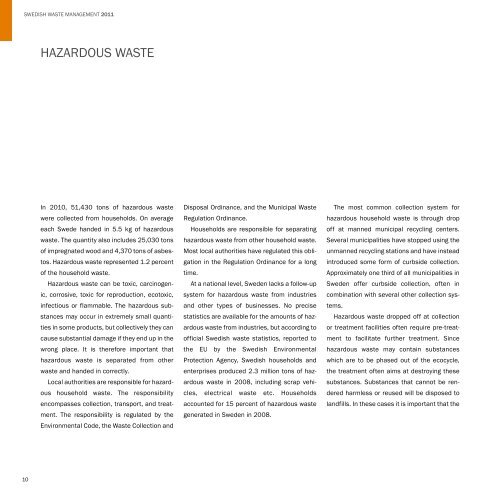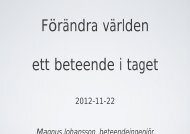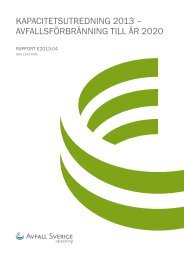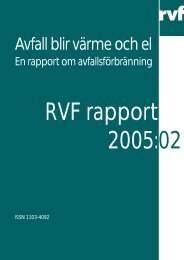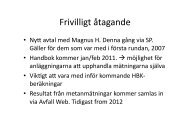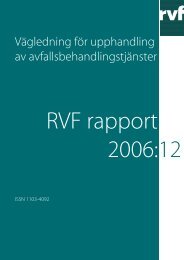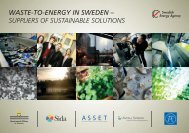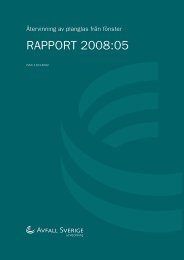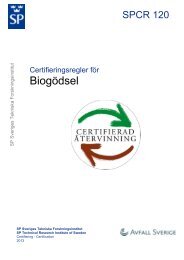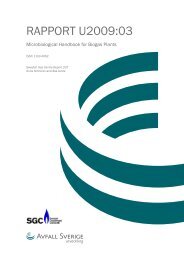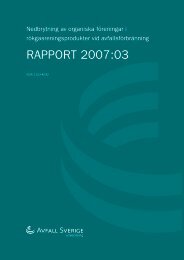SwediSh waSte management |2011 - Avfall Sverige
SwediSh waSte management |2011 - Avfall Sverige
SwediSh waSte management |2011 - Avfall Sverige
You also want an ePaper? Increase the reach of your titles
YUMPU automatically turns print PDFs into web optimized ePapers that Google loves.
Swedish waste <strong>management</strong> 2011Hazardous WasteIn 2010, 51,430 tons of hazardous wastewere collected from households. On averageeach Swede handed in 5.5 kg of hazardouswaste. The quantity also includes 25,030 tonsof impregnated wood and 4,370 tons of asbestos.Hazardous waste represented 1.2 percentof the household waste.Hazardous waste can be toxic, carcinogenic,corrosive, toxic for reproduction, ecotoxic,infectious or flammable. The hazardous substancesmay occur in extremely small quantitiesin some products, but collectively they cancause substantial damage if they end up in thewrong place. It is therefore important thathazardous waste is separated from otherwaste and handed in correctly.Local authorities are responsible for hazardoushousehold waste. The responsibilityencompasses collection, transport, and treatment.The responsibility is regulated by theEnvironmental Code, the Waste Collection andDisposal Ordinance, and the Municipal WasteRegulation Ordinance.Households are responsible for separatinghazardous waste from other household waste.Most local authorities have regulated this obligationin the Regulation Ordinance for a longtime.At a national level, Sweden lacks a follow-upsystem for hazardous waste from industriesand other types of businesses. No precisestatistics are available for the amounts of hazardouswaste from industries, but according toofficial Swedish waste statistics, reported tothe EU by the Swedish EnvironmentalProtection Agency, Swedish households andenterprises produced 2.3 million tons of hazardouswaste in 2008, including scrap vehicles,electrical waste etc. Householdsaccounted for 15 percent of hazardous wastegenerated in Sweden in 2008.The most common collection system forhazardous household waste is through dropoff at manned municipal recycling centers.Several municipalities have stopped using theunmanned recycling stations and have insteadintroduced some form of curbside collection.Approximately one third of all municipalities inSweden offer curbside collection, often incombination with several other collection systems.Hazardous waste dropped off at collectionor treatment facilities often require pre-treatmentto facilitate further treatment. Sincehazardous waste may contain substanceswhich are to be phased out of the ecocycle,the treatment often aims at destroying thesesubstances. Substances that cannot be renderedharmless or reused will be disposed tolandfills. In these cases it is important that the10


